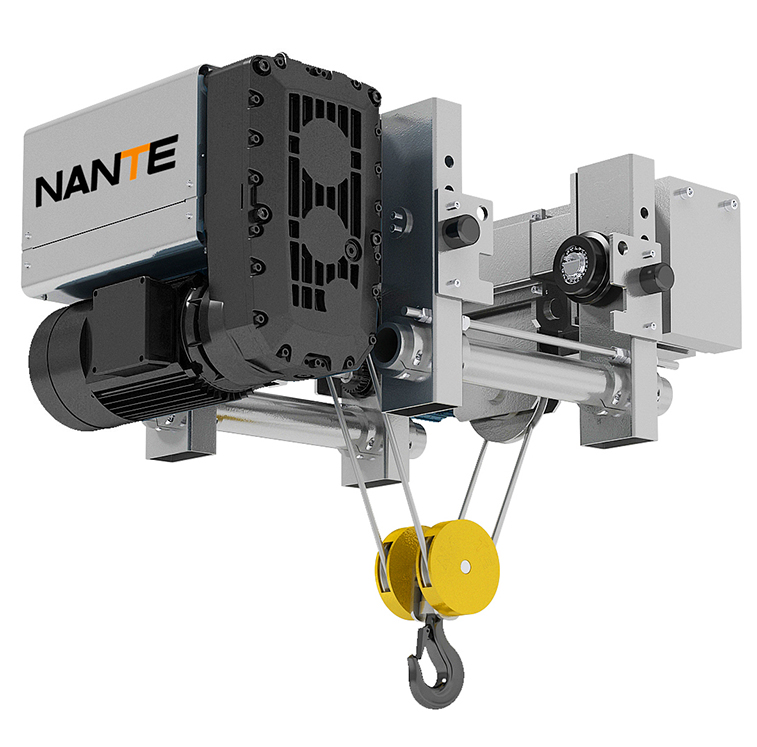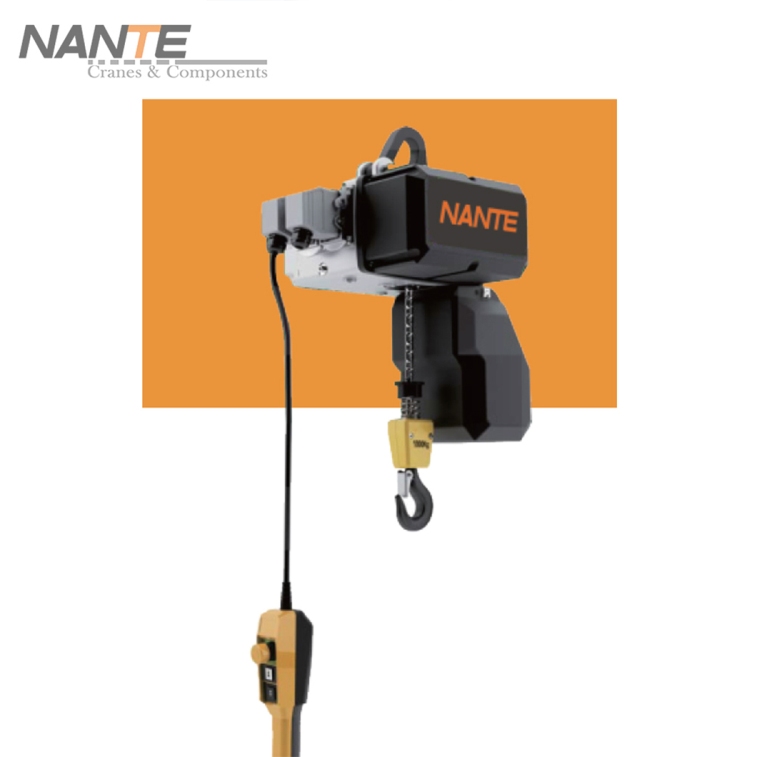The Difference Between Chain Hoists and Wire Rope Hoists
Date: 2024-04-12 Share:
Within the industry of lifting machinery, chain hoists and wire rope hoists are prevalent forms of equipment. Each showcases distinct characteristics and is suited for specific scenarios—the selection largely being dictated by the intricacies of the work environment and operational requirements. This discussion will undertake a detailed exploration of the disparities between chain hoists and wire rope hoists, delving into aspects such as structure, working principle, performance efficiency levels, and safety measures in addition to their pertinent application areas.
Structural Characteristics
The structural composition of chain hoists and wire rope hoists exhibit considerable distinctions. Primarily, chain hoists incorporate elements like sprockets, chains, drives, and control systems. The bearing and transmission functions are carried out by the chain mechanism through the application of a sprocket to execute lifting and descending movements. Typically, high-strength alloy steel serves as the primary material in constructing hoist chains due to its wear-resistant, corrosion-resistant, heat-proof attributes. As such, these characteristics optimally equip it for deployment in demanding work environments.
Comprised chiefly of wire ropes, reels, driving devices and control systems, wire rope hoists operate via the use of load-bearing components that facilitate upward and downward movements. Integral to this operation is the wire rope itself which is ordinarily composed through an intricate process involving multiple strands of robust steel wiring. This construction imbues the hoist with impressive strength and flexibility making it ideally suited for lifting substantial loads over considerable distances.

Working Principle
The operational modalities of chain hoists and wire rope hoists vary significantly.
The functioning mechanism of a chain hoist involves the utilization of a drive system that propels the sprocket wheel to rotate, thereby triggering the ascension effect on the chain. Given the minimal friction resistance presented by the chain when interacting with the sprocket wheel, chain hoists exhibit superior transmission proficiency and elevate at an accelerated speed. Concurrently, due to its enhanced rigidity, chains uphold excellent positioning accuracy and stability during operation.
Wire rope hoists, on the other hand, are driven by the drive device to drive the drum rotation, so that the wire rope is wound or unwound on the drum to realize the lifting and lowering movement. The flexibility of the wire rope enables the hoist to operate flexibly in complex spaces, while its high-strength characteristics enable the hoist to carry large loads. However, the friction resistance of the wire rope on the drum is large, which may affect the transmission efficiency and lifting speed of the hoist.
Usability
In terms of use performance, chain hoists and wire rope hoists have their own merits. Chain hoists excel in heavy-duty, high-frequency, short-distance lifting operations due to the rigidity and abrasion resistance of the chain. In addition, chain maintenance is relatively simple and replacement costs are low. However, the lifting speed of chain hoists may be limited by the length of the chain, which may be less suitable for occasions requiring long lifting distances.
Wire rope hoists, on the other hand, have a clear advantage in long-distance, large-load lifting operations due to the flexibility and high strength of their wire ropes. Wire rope hoists can be adapted to more complex working environments, such as the need to cross obstacles or multi-angle lifting occasions. However, the maintenance cost of wire rope is relatively high, and care needs to be taken to avoid wear and tear and breakage of wire rope in the process of use.
Safety
Safety is an important factor to consider when choosing a hoist. Chain hoists and wire rope hoists have certain safeguards in terms of safety. Chain hoists are usually equipped with overload protection devices and chain breakage protection devices to ensure that overload or chain breakage and other abnormalities can be stopped in time to avoid accidents.
Wire rope hoists, on the other hand, ensure the safety of lifting operations by choosing high-strength, highly wear-resistant wire ropes, as well as being equipped with reliable braking systems anti-detachment devices and other safety measures. In addition, wire rope hoists can be equipped with limit switches, torque limiters and other safety devices according to the actual needs to further improve operational safety.

Applications
Chain hoists and wire rope hoists are also different in application areas. Chain hoists are widely used in factories, warehouses, docks and other places for material handling and equipment installation due to their compact structure and high transmission efficiency. Especially in the need for frequent lifting and lowering, and positioning accuracy requirements of high occasions, chain hoists have greater advantages.
Wire rope hoists, on the other hand, are more often used in large-scale engineering fields such as construction sites, bridge construction and mining due to their flexibility and large load capacity. On these occasions, wire rope hoists can cope with the complex and changing operating environment to meet the needs of large loads and long-distance lifting.
Conclusion
In summary, chain hoists and wire rope hoists have significant differences in structure, working principle, performance, safety and application areas. The choice of hoist needs to be based on the specific operating environment and demand for comprehensive consideration. In practice, according to the weight of the lifting weight, lifting distance, operating environment safety requirements and other factors, to choose the right type of hoist. At the same time, the use and maintenance of hoists also need to be strictly by the operating procedures to ensure safe and efficient lifting operations.
With the continuous development of industrial technology, chain hoists and wire rope hoists are also constantly innovating and improving. In the future, we can look forward to the emergence of more efficient, safe and intelligent lifting equipment to provide more powerful support for industrial production and social development. Nante provides many types of wire rope hoists and chain hoists, looking forward to your contacting us at any time, to learn about the related hoist product information!
 English
English






